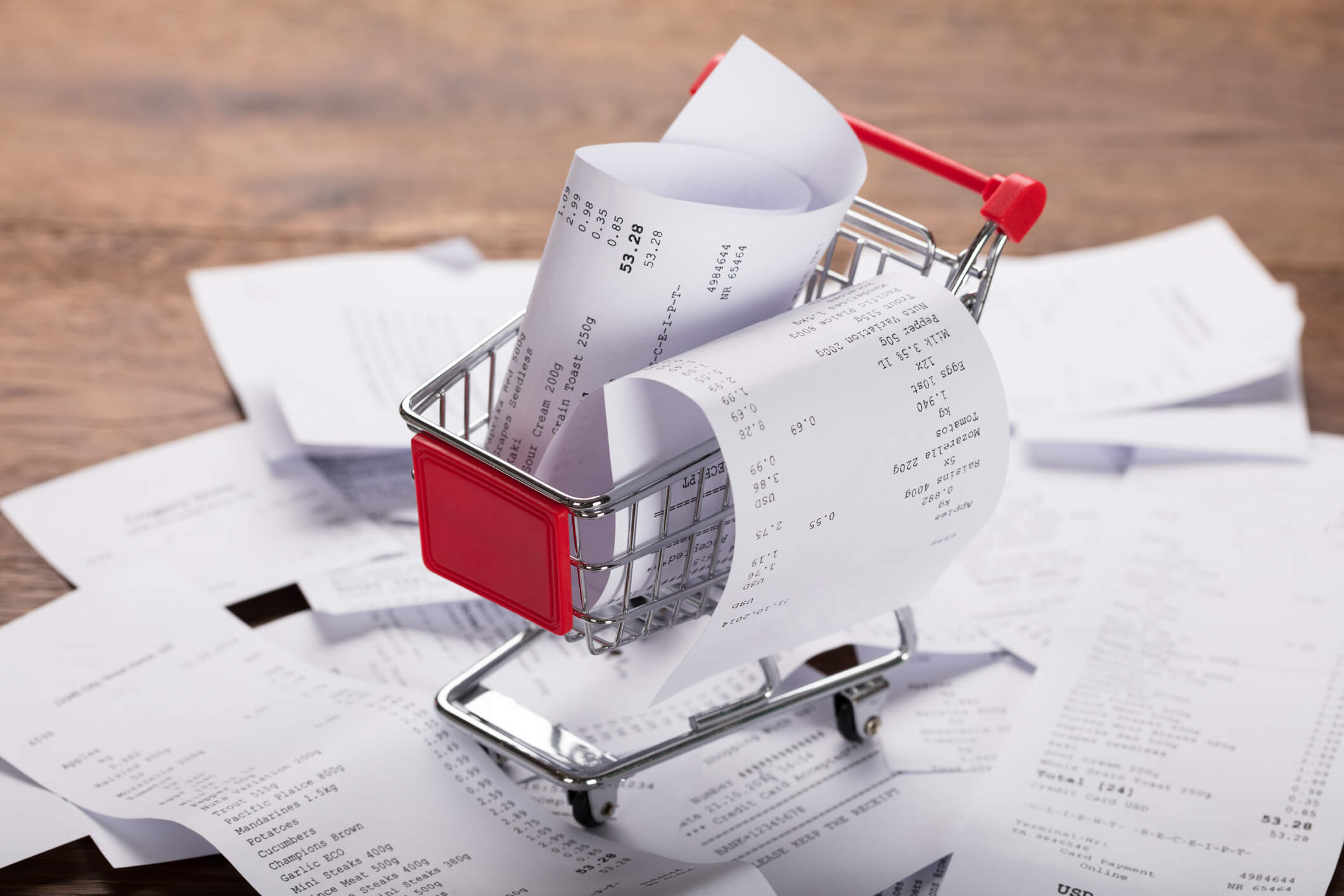By: Jennifer Brazer
Jennifer is the author of From Cubicle to Cloud and Founder/CEO of Complete Controller, a pioneering financial services firm that helps entrepreneurs break free of traditional constraints and scale their businesses to new heights.
Fact Checked By: Brittany McMillen
How to Do Bookkeeping for a Local Grocery Store: Tips & Tricks
Bookkeeping for a local grocery store requires specialized systems that handle high-volume transactions, inventory management, and complex tax obligations. The unique challenges of grocery retail—from perishable goods tracking to daily cash handling—demand tailored financial practices that balance operational efficiency with accounting accuracy.
I’ve spent over two decades helping grocery store owners transform their financial operations through Complete Controller’s services. What continues to surprise me is how the right bookkeeping approach can directly impact a store’s bottom line—reducing inventory shrink rates from the industry average of 2-4% down to under 1% with proper tracking systems. In this comprehensive guide, I’ll share the practical strategies and automation tools that have helped our grocery clients streamline operations, maintain tax compliance, and gain the financial clarity needed to make strategic business decisions.

What is bookkeeping for a local grocery store and how do you implement it effectively?
- Bookkeeping for a local grocery store involves tracking inventory, managing high-volume transactions, ensuring tax compliance, and organizing financial data for business insights.
- The foundation begins with a grocery-specific chart of accounts that separates departments and revenue streams.
- Daily reconciliation practices must address cash handling, credit card processing, and supplier payments.
- Inventory management systems must integrate with point-of-sale to track perishables and reduce shrinkage.
- Professional bookkeeping services can provide industry expertise while automating repetitive tasks to save time.
Setting Up Your Grocery Store’s Bookkeeping Foundation
The backbone of effective grocery store bookkeeping is a proper initial setup that accounts for the unique aspects of food retail. This framework directly impacts your ability to make informed business decisions, maintain compliance, and identify profit opportunityes.
A complete bookkeeping system for grocery stores must track multiple payment methods, manage vendor relationships, and monitor departmental performance. According to industry data, grocery stores operate on razor-thin margins—typically 1-3%—making precise financial tracking essential for profitability. Your bookkeeping foundation should facilitate both broad financial oversight and granular analysis of each department’s performance.
Key elements of your initial setup should include:
- Separate bank accounts for operations and payroll
- Department-specific expense tracking
- Integration between POS and accounting software
- Daily reconciliation procedures
- Designated responsibilities for financial tasks
Mastering High-Volume Transactions and Daily Operations
Grocery stores face unique challenges with hundreds or thousands of daily transactions across multiple departments. This transaction volume creates complexity that requires systematic documentation and reconciliation processes.
Fresh produce departments lose 12.6% of fruits and 11.6% of vegetables to spoilage annually, with fragile items like papayas and leafy greens experiencing the highest shrink rates. These losses directly impact your bottom line, making accurate transaction recording essential for identifying and addressing inventory shrinkage.
Key components of transaction management
- Sales Documentation: Record all transactions through your POS system, categorizing sales by department (produce, meat, dairy, etc.) to identify performance trends.
- Payment Processing: Implement systems to track cash, credit cards, EBT/SNAP benefits, and mobile payments separately while ensuring all converge in your accounting system.
- End-of-Day Reconciliation: Create a standardized closing procedure that includes:
- Balancing each register with receipts
- Documenting cash drops and deposits
- Reconciling credit card batch totals
- Recording daily inventory adjustments
- Notating any discrepancies for follow-up
Daily operational tips
- Schedule dedicated time for financial tasks when store traffic is lowest
- Cross-train multiple employees on reconciliation procedures
- Use standardized forms for cash handling and inventory adjustments
- Implement dual control for cash counting and deposit preparation
- Document all vendor deliveries and returns at the time they occur
Implementing a Robust Accounting System with Inventory Integration
The right accounting software serves as the command center for your grocery store’s financial operations. The key is selecting a system that addresses the specific needs of grocery retail while integrating with your existing operational tools.
Your accounting system should seamlessly connect with your point-of-sale system, providing real-time data flow that eliminates duplicate entry and reduces human error. This integration is particularly crucial for inventory management for grocery stores, where tracking thousands of SKUs manually would be impractical.
Essential software features
Inventory Tracking Capabilities
- Barcode scanning integration
- Multi-unit inventory (tracking both individual items and cases)
- Automated reorder point notifications
- Expiration date tracking for perishables
- Department-specific inventory reports
Specialized Reporting
- Profit margin analysis by department
- COGS tracking for prepared foods
- Sales tax reporting by category
- Vendor performance metrics
- Shrinkage and waste reporting
Integration Requirements
- POS system compatibility
- Scale system connections for weighted items
- Time clock/payroll system integration
- E-commerce platform syncing (if applicable)
A case study from Clearline Distribution demonstrates the power of integrated systems—by connecting their Xero accounting with a mobile sales app, they reduced order entry time by 30% while significantly improving inventory accuracy. This integration eliminated manual data entry errors and provided real-time visibility into their stock levels.

Managing Tax Compliance and Regulatory Requirements
Grocery stores face complex tax obligations that extend beyond standard business taxes. The varied nature of products sold—from prepared foods to non-taxable groceries—creates a multilayered tax landscape that demands careful attention.
Understanding your tax obligations is crucial, as penalties for non-compliance can quickly erode your already tight profit margins. Working with tax professionals who understand the grocery industry can help navigate these complexities while identifying legitimate deductions.
Tax considerations for grocery stores
- Sales Tax Variations: Different tax rates may apply to:
- Prepared foods vs. unprepared foods
- Dietary supplements vs. conventional groceries
- Alcohol and tobacco products
- Non-food merchandise
- Employment Taxes: Managing payroll taxes for both full-time and part-time employees, including:
- Federal and state income tax withholding
- Social Security and Medicare contributions
- Federal and state unemployment taxes
- Workers’ compensation insurance
- Specialized Regulations: Compliance with industry-specific requirements:
- Health department regulations
- SNAP/EBT program participation
- Alcohol and tobacco licensing
- VAT & sales tax compliance guidelines
Retail shrink rates increased from 1.4% in 2021 to 1.6% in 2022, costing U.S. retailers $142 billion annually. This trend highlights the importance of accurate inventory accounting for tax reporting, as inventory losses can significantly impact both your financial statements and tax obligations.
Setting Up a Strategic Chart of Accounts for Grocery Stores
A well-designed chart of accounts (COA) serves as the organizational framework for your financial data, enabling meaningful reporting and analysis. For grocery stores, this structure should reflect your operational departments while providing the granularity needed for performance assessment.
Your COA should balance detail with usability—too many accounts creates unnecessary complexity, while too few limits analytical capabilities. Accounting solutions for community grocery stores typically recommend a department-based approach that aligns with how you manage your business.
Sample grocery store chart of accounts framework
| Account Category | Grocery-Specific Accounts | Purpose |
| Assets | Cash, Inventory (by department), Equipment, Fixtures | Tracks resources owned by the business |
| Liabilities | Accounts Payable, Sales Tax Payable, Payroll Liabilities | Records debts and obligations |
| Equity | Owner’s Capital, Retained Earnings | Represents ownership interest |
| Revenue | Sales (by department), Bottle Deposits, Lottery Commissions | Captures all income sources |
| COGS | Purchases (by department), Spoilage/Shrinkage, Inventory Adjustments | Directly ties expenses to revenue |
| Expenses | Wages, Rent, Utilities, Marketing, Equipment Maintenance | Captures operational costs |
Chart of accounts best practices
- Group accounts by function and department
- Use consistent naming conventions
- Include accounts for tracking waste and shrinkage
- Separate taxable from non-taxable sales
- Review and adjust your COA annually as your business evolves
Optimizing Cash Flow and Bank Reconciliation Practices
Cash flow management is particularly critical in grocery retail, where high-volume, low-margin operations leave little room for financial inefficiency. Effective cash flow optimization balances vendor payment obligations with operational needs and growth investments.
Regular bank reconciliation serves as your financial reality check, ensuring your books accurately reflect your actual financial position. This practice helps identify discrepancies, prevent fraud, and maintain clean financial records for tax purposes and potential financing needs.
Cash flow strategies for grocery stores
- Inventory Management
- Implement just-in-time ordering for perishables
- Negotiate consignment arrangements for specialty items
- Use sales data to optimize stock levels and reduce tied-up capital
- Vendor Relationships
- Negotiate favorable payment terms (Net 30, 60, or 90)
- Take advantage of early payment discounts when cash flow permits
- Develop relationships with multiple suppliers to ensure competitive pricing
- Cash flow best practices
- Create 13-week rolling cash flow forecasts
- Establish minimum cash reserves based on seasonality
- Monitor key performance indicators like inventory turnover ratio
- Implement cash conservation strategies during slower periods
Bank reconciliation protocol
- Complete reconciliations weekly rather than monthly to catch issues early
- Segregate duties between cash handling and reconciliation
- Document and investigate all discrepancies immediately
- Maintain digital copies of all supporting documentation
- Review cleared checks for unauthorized signatures or alterations
Leveraging Professional Bookkeeping Services for Expertise
While internal bookkeeping may seem cost-effective initially, many grocery store owners find that bookkeeping services for supermarkets provide superior results through specialized expertise and advanced systems. Professional services offer industry-specific knowledge that can transform your financial operations from a necessary task to a strategic advantage.
The case of Li’l Guy Foods demonstrates this impact—by implementing professional bookkeeping systems, they reduced inventory waste by $25,000 in just 40 days through improved production planning and automated financial tracking. This ROI exemplifies how expert financial management directly impacts operational efficiency.
Benefits of professional bookkeeping services
- Industry Expertise: Access to professionals who understand grocery-specific challenges
- System Optimization: Implementation of integrated solutions tailored to your operation
- Scalability: Ability to adjust service levels as your business grows
- Compliance Assurance: Stay current with changing tax laws and reporting requirements
- Strategic Insights: Receive regular financial analysis beyond basic transaction recording
What to look for in a grocery store bookkeeping partner
- Industry Experience: Previous work with grocery or retail clients
- Software Proficiency: Expertise with your POS and accounting systems
- Service Model: Options ranging from full-service to advisory roles
- Communication Style: Regular reporting and availability for questions
- Technology Approach: Cloud-based systems with secure access from anywhere
Final Thoughts: Transforming Bookkeeping from Burden to Business Advantage
Effective bookkeeping for a local grocery store isn’t just about recording transactions—it’s about creating financial visibility that drives better business decisions. By implementing the systems and strategies outlined in this guide, you’ll transform your bookkeeping from a necessary administrative task into a strategic business function.
Throughout my years at Complete Controller, I’ve witnessed the remarkable transformation that occurs when grocery store owners gain clarity into their financial operations. From reducing inventory shrinkage to optimizing departmental profitability, proper bookkeeping unlocks insights that directly impact your bottom line. The key is implementing systems that address the unique challenges of grocery retail while providing the data you need to make informed decisions.
If you’re ready to elevate your grocery store’s financial management, the team at Complete Controller is here to help. With industry-specific expertise and customized solutions, we can help you implement the systems that will give you both compliance confidence and strategic advantage. Contact us today to learn how our bookkeeping services can support your grocery store’s success.

FAQ
What accounting software works best for small grocery stores?
QuickBooks Enterprise and Xero are top choices for small to mid-sized grocery stores because they offer strong inventory management features and POS integration capabilities. QuickBooks Enterprise provides more robust inventory tracking for stores with large product catalogs, while Xero offers excellent multi-user accessibility and third-party app integration. Your choice should depend on your store’s size, inventory complexity, and budget constraints. For very small operations, QuickBooks Online with inventory add-ons may be sufficient.
How often should grocery stores reconcile their accounts?
Grocery stores should reconcile their bank accounts weekly rather than monthly due to high transaction volumes. Daily reconciliation of registers is essential to catch discrepancies immediately, while weekly bank reconciliation helps identify banking errors, unauthorized transactions, or internal control issues before they compound. Monthly reconciliation of vendor statements ensures accurate inventory valuation and identifies any billing discrepancies that could affect your profitability.
How do I handle bookkeeping for different grocery departments?
Set up department-specific tracking in your chart of accounts for both revenue and direct expenses. Each department (produce, meat, dairy, etc.) should have dedicated income accounts and cost of goods sold accounts. This structure allows you to generate departmental profit and loss statements to evaluate performance. Additionally, implement inventory tracking by department and assign overhead costs proportionally based on factors like square footage or revenue percentage to accurately assess each department’s profitability.
What’s the best way to track grocery inventory for bookkeeping purposes?
Integrate your point-of-sale system with your accounting software for real-time inventory updates. Use inventory management for grocery stores systems that support multiple units of measure, barcode scanning, and batch tracking. Conduct regular physical inventory counts (weekly for high-value items, monthly for general stock) and immediately reconcile discrepancies. For perishables, implement date tracking to manage shelf life and reduce spoilage. Category-specific inventory reports will help identify theft or loss patterns requiring attention.
How can I reduce bookkeeping costs for my grocery store?
Automate repetitive tasks through software integration between your POS and accounting systems. Train staff on proper daily recording procedures to minimize error correction time. Consider outsourcing to specialized bookkeeping services with grocery experience, which often costs less than a full-time bookkeeper while providing higher expertise. Implement cloud-based solutions that allow real-time collaboration between your team and financial professionals. Finally, develop clear financial processes that standardize data entry and reconciliation, reducing the time required for these essential tasks.
Sources
- BooksTime Blog. “Grocery Store Accounting: Mastering Best Practices.” BooksTime. (n.d.)
- https://www.bookstime.com/blog/grocery-store-accounting
- Complete Controller Blog. “Bookkeeping Tips for Grocery Stores.” Complete Controller. (28 Aug 2020)
- https://www.completecontroller.com/bookkeeping-tips-grocery-stores
- OBG Outsourcing Blog. “Grocery Store Accounting: A Guide for Efficient Financial Management.” OBG Outsourcing. (18 Mar 2025)
- https://www.obgoutsourcing.com/grocery-store-accounting-guide
- Enkel Blog. “Comprehensive Bookkeeping Guide for Retail Businesses.” Enkel. (19 Jul 2024)
- https://www.enkelblog.com/retail-bookkeeping-guide
- FreshBooks Blog. “15 Bookkeeping Tips: Every Small Business Needs to Know.” FreshBooks. (n.d.)
- https://www.freshbooks.com/blog/bookkeeping-tips
- Marktpos Blog. “What Is the Average Grocery Store Shrink?” Marktpos. (18 June 2024)
- https://www.marktpos.com/blog/average-grocery-store-shrink
- USDA Charts of Note. “Supermarket Shrink Varies by Fresh Produce Type.” USDA. (23 June 2016)
- http://www.ers.usda.gov/data-products/charts-of-note/chart-detail?chartId=79033
- PYMNTS News. “Retail Theft and Shrink Reports.” PYMNTS. (9 Jan 2024)
- https://www.pymnts.com/news/retail/2024/retail-theft-and-shrink-reports-have-investors-seeking-answers
- Intuit QuickBooks. “Case Study: Mexican Food Maker Finds Recipe for Success.” Intuit. (2016)
- https://http-download.intuit.com/http.intuit/CMO/qbes/resources/pdfs/CaseStudy_LilGuyFoods.pdf
- Onsight Blog. “Clearline Distribution Case Study.” Onsight. (n.d.)
- https://www.onsightapp.com/case-studies/clearline-distribution
- Internal Revenue Service. “Small Businesses and Self-Employed.” IRS.gov. (n.d.)
- https://www.irs.gov/businesses/small-businesses-self-employed
- U.S. Small Business Administration. “Manage Your Finances.” SBA.gov. (n.d.)
- https://www.sba.gov/business-guide/plan-your-business/manage-your-finances
- Wikipedia. “Inventory Management.” Wikimedia Foundation. (n.d.)
- https://en.wikipedia.org/wiki/Inventory_management
 About Complete Controller® – America’s Bookkeeping Experts Complete Controller is the Nation’s Leader in virtual bookkeeping, providing service to businesses and households alike. Utilizing Complete Controller’s technology, clients gain access to a cloud platform where their QuickBooks™️ file, critical financial documents, and back-office tools are hosted in an efficient SSO environment. Complete Controller’s team of certified US-based accounting professionals provide bookkeeping, record storage, performance reporting, and controller services including training, cash-flow management, budgeting and forecasting, process and controls advisement, and bill-pay. With flat-rate service plans, Complete Controller is the most cost-effective expert accounting solution for business, family-office, trusts, and households of any size or complexity.
About Complete Controller® – America’s Bookkeeping Experts Complete Controller is the Nation’s Leader in virtual bookkeeping, providing service to businesses and households alike. Utilizing Complete Controller’s technology, clients gain access to a cloud platform where their QuickBooks™️ file, critical financial documents, and back-office tools are hosted in an efficient SSO environment. Complete Controller’s team of certified US-based accounting professionals provide bookkeeping, record storage, performance reporting, and controller services including training, cash-flow management, budgeting and forecasting, process and controls advisement, and bill-pay. With flat-rate service plans, Complete Controller is the most cost-effective expert accounting solution for business, family-office, trusts, and households of any size or complexity.




